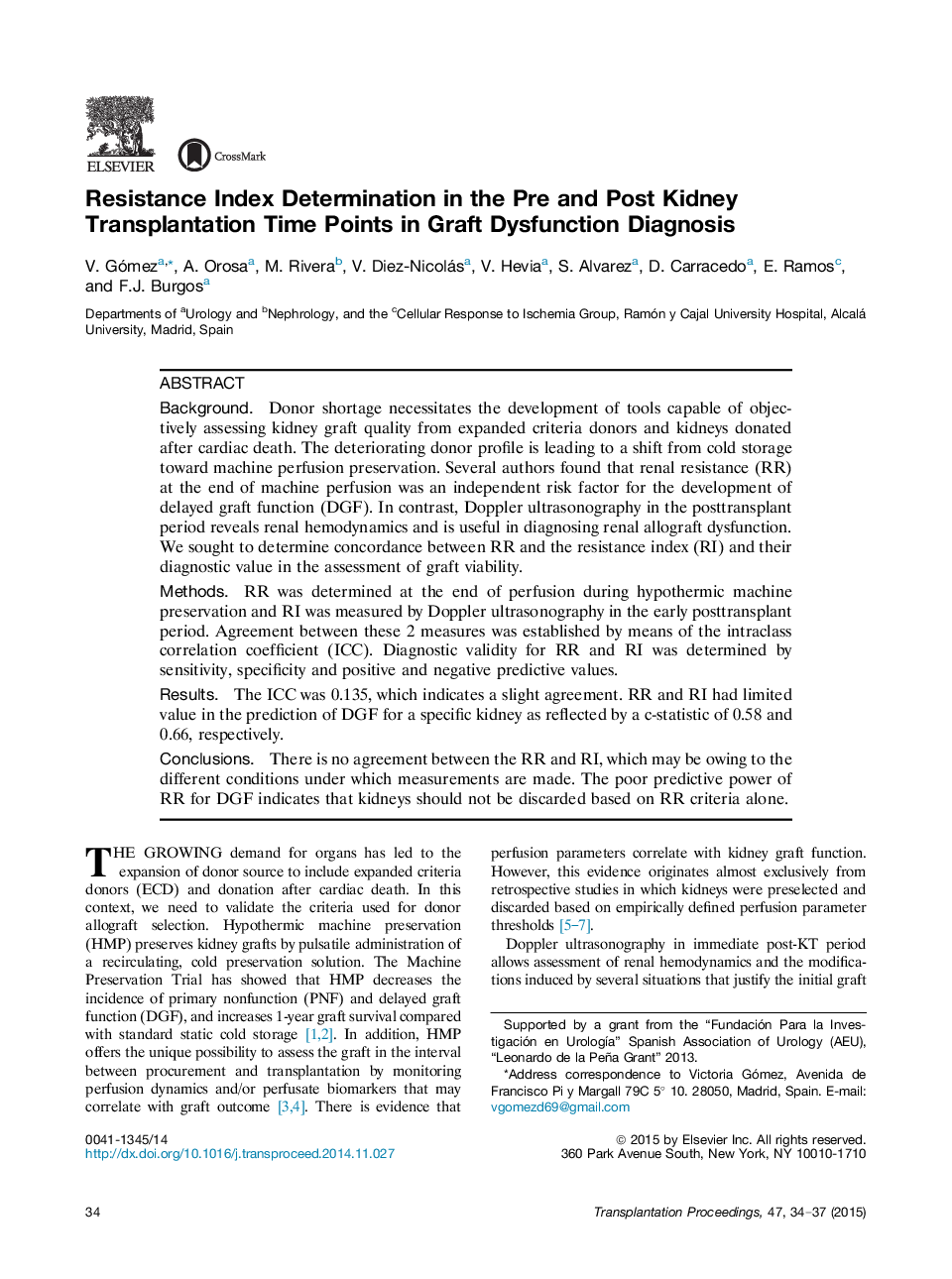| Article ID | Journal | Published Year | Pages | File Type |
|---|---|---|---|---|
| 4256355 | Transplantation Proceedings | 2015 | 4 Pages |
BackgroundDonor shortage necessitates the development of tools capable of objectively assessing kidney graft quality from expanded criteria donors and kidneys donated after cardiac death. The deteriorating donor profile is leading to a shift from cold storage toward machine perfusion preservation. Several authors found that renal resistance (RR) at the end of machine perfusion was an independent risk factor for the development of delayed graft function (DGF). In contrast, Doppler ultrasonography in the posttransplant period reveals renal hemodynamics and is useful in diagnosing renal allograft dysfunction. We sought to determine concordance between RR and the resistance index (RI) and their diagnostic value in the assessment of graft viability.MethodsRR was determined at the end of perfusion during hypothermic machine preservation and RI was measured by Doppler ultrasonography in the early posttransplant period. Agreement between these 2 measures was established by means of the intraclass correlation coefficient (ICC). Diagnostic validity for RR and RI was determined by sensitivity, specificity and positive and negative predictive values.ResultsThe ICC was 0.135, which indicates a slight agreement. RR and RI had limited value in the prediction of DGF for a specific kidney as reflected by a c-statistic of 0.58 and 0.66, respectively.ConclusionsThere is no agreement between the RR and RI, which may be owing to the different conditions under which measurements are made. The poor predictive power of RR for DGF indicates that kidneys should not be discarded based on RR criteria alone.
